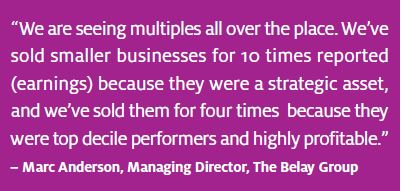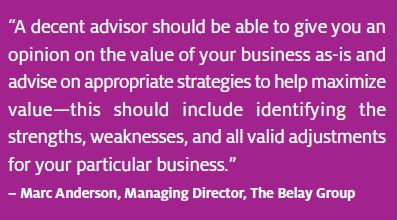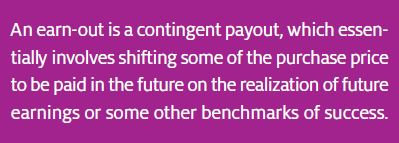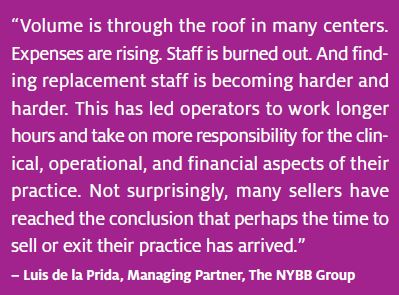Urgent message: While market conditions for mergers and acquisitions are currently “hot,” variability in urgent care volume attributable to COVID-19 has led to changes in how deals are evaluated and structured.
Alan A. Ayers, MBA, MAcc is President of Experity Networks and is Senior Editor of the Journal of Urgent Care Medicine
Nationally, merger-and-acquisition activity has set a record pace across all industries since the start of the pandemic. Corporations, private equity funds, and buyout firms have built up cash reserves to levels never seen before. Low interest rates provide few options for investors in search of steady cash flow. Prospective changes to capital gains taxes provide an immediacy for sellers. The result is a lot of money is currently chasing after increasingly fewer “quality” deals.
In healthcare, hospitals and health systems continue to consolidate providers in their local markets to create the “integrated delivery networks” required for patient coordination in “value-based care.” We also see themes of “population health” changing the delivery of primary care, particularly for dual-eligible Medicare Advantage populations. “Tech-enabled” providers promise to increase the operational efficiency of primary care while improving health outcomes for patients and payers.
URGENT CARE DEAL-MAKING IS ‘HOT’
Urgent care, which now numbers 10,000 to 14,000 centers depending which data source you consult, fits well into multiple investment themes. Local operators provide a “retail storefront” and a loyal patient following that generates quantifiable downstream referrals for hospitals and health systems. Urgent care is also the easiest way for multispecialty providers to enter the acute care space.
The “brick and mortar” and established patient base of urgent care can be “marked” expanded services from allergy to behavioral health, as well as telemedicine, to become more relevant to their patient base. Increasingly, Gen X and Millennial populations utilize urgent care in lieu of a traditional primary care provider or as the “access point” for all their health needs. And urgent care operators that have scaled to multiple locations generate reliable, steady cash flow in the form of EBITDA margins.

Valuation Based on Earnings
In most instances, valuation is based on a “multiple of earnings” because the buyer sees value in the established patient base, providers and staff, payer contracts, and “intangibles” such as brand and culture they wish to continue into the future. Anderson explains the factors that drive a range of multiples:
“We tend to see people use a combination of discounted cash flow analysis and market multiples to price smaller deals with a heavy bit of negotiation. Since there isn’t much publicly available data on market comps it’s mostly hearsay or the general rule of thumb of approximately 4- to 5 times earnings,” Anderson said.
“The reality is that a larger, scaled organization should provide cost-synergies to an acquiring entity which makes their effective multiple lower, in addition to the implied arbitrage they get from earnings applied to the acquirors perceived multiple. We’ve seen small assets trade at eight- to 10 times their adjusted earnings on a synergized basis—although not knowing the acquiror’s financial model, it can usually be guestimated to be in the five times’ range (lower RCM costs, better supply costs, scaled administrative costs, etc.). In the case of a health system, the synergies can be pretty dramatic on the revenue side. We’ve seen scenarios where the acquiror has 50%+ better contracted rates, which goes straight to the bottom line,” Anderson added.
When considering what to pay for an acquisition, at some point a buyer will have to weigh whether they’d get a better return on invested capital by the acquisition or building outright. Their thought process, according to Anderson is, “We can either buy two sites for $10 or put up five sites for $10. What’s the best ROIC?”

Adjustments to EBITDA Valuation
When calculating the EBITDA figure to use, certain revenue or expenses may be “backed out” from the financial statements to get a more accurate financial picture of the business.
According to Anderson, typical EBITDA adjustments for closely held businesses revolve around nonoperational or owner-exclusive expenses. Other adjustments relate to truly one-time items—like operational consultants, large marketing plans, and expensed capital projects (since many are cash basis accounting, they tend to try to “write-off” all expenses vs capitalize).
“From a technical perspective, reported EBITDA is what a company reports, but we would really consider EBITDA exclusive of one-time and nonoperational items. Other reasonable adjustments to us are for pro-forma items that have occurred more recently and change the future performance of a business—such as a new, improved payer contract, or a lower price from a vendor—these should be adjusted into the historical periods as pro-forma adjustments. In rapidly growing, multisite operations with a proven growth profile, we believe it’s also reasonable to adjust for run-rate performance for newly opened sites,” Anderson explained.
“The key to us is that the current performance is going to be different than the performance that the acquiring entity gets at close or in a few months or more time. The purchase price should be based on what’s expected in the future, and that’s why acquiring entities often rely on multiple valuation approaches—discounted cash flow, market multiples, leveraged buy-out analysis—to triangulate a purchase price.”

Impact of COVID-19 on Valuation
COVID-19 has made underwriting very difficult for buyers. The volatility in performance experienced by many operators over the past couple of years has been dramatic. And in many primary or secondary metropolitan areas the growth has been highly positive. According to Anderson, this has resulted in larger multiples for selling companies but “from a current or trailing 12 months’ perspective, the multiple may seem muted.”
Anderson said most buyers are underwriting based on an expected heightened future volume from COVID-19 but more in-line with volume trends from previous “super flu seasons,” maybe just more consistent during the year. “My opinion is that we’ve seen the height of COVID-19 volumes and maybe will see one more peak this winter, but after that, vaccine mandates will start to take effect and testing accessibility, and costs (and margins) continuing to come down,” he said.
“I still think the long-term tailwinds of urgent care are better than they’ve ever been, but I also see that large operators are on a massive expansion and roll-up phase. So, while urgent care volumes in general will go up, we expect competition will also increase, probably reverting existing operators’ performance more back to historical means,” Anderson added.
THE INCREASING ROLE OF EARN-OUTS IN URGENT CARE DEALS
An “earnout” stipulates that the seller will be paid over a period of time, subject to achieving or exceeding a certain level of performance. This means that the seller is not only contractually obligated to stay with the company through a transition period, but that the seller will continue to have a demonstrable effect on the company’s financial performance.
For example, a buyer might agree to pay 90% of the total purchase price you desire upfront with the remaining 10% paid in stock or cash after a year of earn-out time. Alternately, the buyer might split the sale price 50/50 over 5 years, during which the owner must agree to stay with the company and optimize its performance.
When there is a gap between an owner and a potential acquirer in the perceived value of a business, it is usually caused by the expected future growth of the company. For buyers, the earn-out smooths the ownership transition and offers protection against overpaying for a company that doesn’t end up thriving or growing the way they intended.
Earnouts were not common to urgent care transactions prior to the pandemic, but given the outsized performance of urgent care centers that embraced COVID-19 testing over the last 2 years, buyers now have concern over what future volumes will do because the COVID-19 volume spikes were so dramatic.
Earnouts can come in any flavor but are typically based on visit volume, not revenue or EBITDA, to avoid Stark issues. Typically, the buyer will lay out a pro-forma and if performance is within, say, 90% of budget, then the seller would get the full payout due at the milestone. If performance is less than projections, say 85%, 80% or lower, then the payout would be ratcheted down accordingly.
An issue for sellers occurs if the buyer substantially changes operations, including the services offered, cost structure, or operations management. A seller may be held accountable for results in a business very different than the one they sold, managed by entirely different people, with decisions made beyond the seller’s control. The longer the term of the earn-out, the greater the risk the seller will not realize the full value of the sale.
Sellers should thus be skeptical of “too good to resist” offers with payment contingent on a long earnout period, particularly if significant changes to the brand, services, staffing, contracts, and technology will occur.

BUYER EXPECTATIONS OF SELLERS
According to de la Prida, since the COVID-19 pandemic began, buyers are increasingly resorting to earnouts and other deferred payments to bridge the valuation gap between buyer and seller. “We expect to see more deferred purchase price arrangements, requiring the sellers to prove out their projections on revenue, earnings, and EBITDA,” he said. “Also, in larger transactions, buyers continue to ask sellers to roll over a portion of their equity in the practice. Holdbacks for regulatory risks and other contingencies are also common,” de la Prida added.
Anderson further explains that from a transition perspective, many of the acquirers now have learned their lesson about managing the embedded culture of an existing facility. “Due to the challenge in recruiting and retaining personnel, we’ve seen considerable effort in acquirers trying to be better stewards of a business than the previous owners; usually they have better benefit packages and they often won’t work the staff as hard and/or can supplement over-worked staff more easily,” Anderson explained. “The hardest transition usually is the older generation employed physician who still has many job options if they decide to leave. But this cohort is fading quickly as most places are now predominately staffed by APC’s who more just want a stable job.”
Most sellers should expect to have a non-compete agreement for 3 to 5 years in a defined geographical area (lining up with acquirer’s footprint) for owning or operating a new similar business, Anderson added. “This doesn’t mean they can’t leave and go work for another operator. They just can’t own/invest in/operate a competing business. In the case of an urgent care business, that’s less than a handful of sites. Unless the owner is a practicing physician, we typically see the acquiring entity take over full operations and leadership.”
THINKING ABOUT SELLING YOUR URGENT CARE CENTER?
Business owners decide to sell their companies for myriad reasons, not the least of which are to capitalize on high valuations, retirement, and burnout. Many physician-entrepreneurial sellers love the practice of medicine but not the business of medicine, which has only become more complicated with COVID-19 variability in volumes, staffing, and supply chain challenges.
“The number-one characteristic shared by many of the sellers I’ve reached out to recently is exhaustion,” de la Prida said. “Small business owners have always had to wear many hats. The pandemic has taken a significant personal and business toll on urgent care sellers.”
Valuation Based on Earnings
In most instances, valuation is based on a “multiple of earnings” because the buyer sees value in the established patient base, providers and staff, payer contracts, and “intangibles” such as brand and culture they wish to continue into the future. Anderson explains the factors that drive a range of multiples:
“We tend to see people use a combination of discounted cash flow analysis and market multiples to price smaller deals with a heavy bit of negotiation. Since there isn’t much publicly available data on market comps it’s mostly hearsay or the general rule of thumb of approximately 4- to 5 times earnings,” Anderson said.
“The reality is that a larger, scaled organization should provide cost-synergies to an acquiring entity which makes their effective multiple lower, in addition to the implied arbitrage they get from earnings applied to the acquirors perceived multiple. We’ve seen small assets trade at eight- to 10 times their adjusted earnings on a synergized basis—although not knowing the acquiror’s financial model, it can usually be guestimated to be in the five times’ range (lower RCM costs, better supply costs, scaled administrative costs, etc.). In the case of a health system, the synergies can be pretty dramatic on the revenue side. We’ve seen scenarios where the acquiror has 50%+ better contracted rates, which goes straight to the bottom line,” Anderson added.
When considering what to pay for an acquisition, at some point a buyer will have to weigh whether they’d get a better return on invested capital by the acquisition or building outright. Their thought process, according to Anderson is, “We can either buy two sites for $10 or put up five sites for $10. What’s the best ROIC?”
Adjustments to EBITDA Valuation
When calculating the EBITDA figure to use, certain revenue or expenses may be “backed out” from the financial statements to get a more accurate financial picture of the business.
According to Anderson, typical EBITDA adjustments for closely held businesses revolve around nonoperational or owner-exclusive expenses. Other adjustments relate to truly one-time items—like operational consultants, large marketing plans, and expensed capital projects (since many are cash basis accounting, they tend to try to “write-off” all expenses vs capitalize).
“From a technical perspective, reported EBITDA is what a company reports, but we would really consider EBITDA exclusive of one-time and nonoperational items. Other reasonable adjustments to us are for pro-forma items that have occurred more recently and change the future performance of a business—such as a new, improved payer contract, or a lower price from a vendor—these should be adjusted into the historical periods as pro-forma adjustments. In rapidly growing, multisite operations with a proven growth profile, we believe it’s also reasonable to adjust for run-rate performance for newly opened sites,” Anderson explained. “The key to us is that the current performance is going to be different than the performance that the acquiring entity gets at close or in a few months or more time. The purchase price should be based on what’s expected in the future, and that’s why acquiring entities often rely on multiple valuation approaches—discounted cash flow, market multiples, leveraged buy-out analysis—to triangulate a purchase price.”
Impact of COVID-19 on Valuation
COVID-19 has made underwriting very difficult for buyers. The volatility in performance experienced by many operators over the past couple of years has been dramatic. And in many primary or secondary metropolitan areas the growth has been highly positive. According to Anderson, this has resulted in larger multiples for selling companies but “from a current or trailing 12 months’ perspective, the multiple may seem muted.”
Anderson said most buyers are underwriting based on an expected heightened future volume from COVID-19 but more in-line with volume trends from previous “super flu seasons,” maybe just more consistent during the year. “My opinion is that we’ve seen the height of COVID-19 volumes and maybe will see one more peak this winter, but after that, vaccine mandates will start to take effect and testing accessibility, and costs (and margins) continuing to come down,” he said.
“I still think the long-term tailwinds of urgent care are better than they’ve ever been, but I also see that large operators are on a massive expansion and roll-up phase. So, while urgent care volumes in general will go up, we expect competition will also increase, probably reverting existing operators’ performance more back to historical means,” Anderson added.
THE INCREASING ROLE OF EARN-OUTS IN URGENT CARE DEALS
An “earnout” stipulates that the seller will be paid over a period of time, subject to achieving or exceeding a certain level of performance. This means that the seller is not only contractually obligated to stay with the company through a transition period, but that the seller will continue to have a demonstrable effect on the company’s financial performance.
For example, a buyer might agree to pay 90% of the total purchase price you desire upfront with the remaining 10% paid in stock or cash after a year of earn-out time. Alternately, the buyer might split the sale price 50/50 over 5 years, during which the owner must agree to stay with the company and optimize its performance.
When there is a gap between an owner and a potential acquirer in the perceived value of a business, it is usually caused by the expected future growth of the company. For buyers, the earn-out smooths the ownership transition and offers protection against overpaying for a company that doesn’t end up thriving or growing the way they intended.
Earnouts were not common to urgent care transactions prior to the pandemic, but given the outsized performance of urgent care centers that embraced COVID-19 testing over the last 2 years, buyers now have concern over what future volumes will do because the COVID-19 volume spikes were so dramatic.
Earnouts can come in any flavor but are typically based on visit volume, not revenue or EBITDA, to avoid Stark issues. Typically, the buyer will lay out a pro-forma and if performance is within, say, 90% of budget, then the seller would get the full payout due at the milestone. If performance is less than projections, say 85%, 80% or lower, then the payout would be ratcheted down accordingly.
An issue for sellers occurs if the buyer substantially changes operations, including the services offered, cost structure, or operations management. A seller may be held accountable for results in a business very different than the one they sold, managed by entirely different people, with decisions made beyond the seller’s control. The longer the term of the earn-out, the greater the risk the seller will not realize the full value of the sale.
BUYER EXPECTATIONS OF SELLERS
According to de la Prida, since the COVID-19 pandemic began, buyers are increasingly resorting to earnouts and other deferred payments to bridge the valuation gap between buyer and seller. “We expect to see more deferred purchase price arrangements, requiring the sellers to prove out their projections on revenue, earnings, and EBITDA,” he said. “Also, in larger transactions, buyers continue to ask sellers to roll over a portion of their equity in the practice. Holdbacks for regulatory risks and other contingencies are also common,” de la Prida added.
Anderson further explains that from a transition perspective, many of the acquirers now have learned their lesson about managing the embedded culture of an existing facility. “Due to the challenge in recruiting and retaining personnel, we’ve seen considerable effort in acquirers trying to be better stewards of a business than the previous owners; usually they have better benefit packages and they often won’t work the staff as hard and/or can supplement over-worked staff more easily,” Anderson explained. “The hardest transition usually is the older generation employed physician who still has many job options if they decide to leave. But this cohort is fading quickly as most places are now predominately staffed by APC’s who more just want a stable job.”
Most sellers should expect to have a non-compete agreement for 3 to 5 years in a defined geographical area (lining up with acquirer’s footprint) for owning or operating a new similar business, Anderson added. “This doesn’t mean they can’t leave and go work for another operator. They just can’t own/invest in/operate a competing business. In the case of an urgent care business, that’s less than a handful of sites. Unless the owner is a practicing physician, we typically see the acquiring entity take over full operations and leadership.”
THINKING ABOUT SELLING YOUR URGENT CARE CENTER?
Business owners decide to sell their companies for myriad reasons, not the least of which are to capitalize on high valuations, retirement, and burnout. Many physician-entrepreneurial sellers love the practice of medicine but not the business of medicine, which has only become more complicated with COVID-19 variability in volumes, staffing, and supply chain challenges. “The number-one characteristic shared by many of the sellers I’ve reached out to recently is exhaustion,” de la Prida said. “Small business owners have always had to wear many hats. The pandemic has taken a significant personal and business toll on urgent care sellers.”
Sellers should thus be skeptical of “too good to resist” offers with payment contingent on a long earnout period, particularly if significant changes to the brand, services, staffing, contracts, and technology will occur.
Another common characteristic of sellers is they’re seeking to capitalize on still-high valuations in the sector, which continues to garner interest from buyers. Lastly, competition in the sector continues to increase. As a result, many sellers are seeking to exit to limit the impact posed by increased competition.
Predicting the Next 2-3 Years
de la Prida expects transaction activity to pick up over the next 2–3 years because the urgent care industry is still in the midst of a growth cycle. While some of this growth is from de novo buildouts, there’s still room for growth via mergers and acquisitions. He explained that the industry remains fragmented, with no one player accounting for more than 10% of centers. This means that there are plenty of smaller centers available for those seeking to increase market share.
Additionally, the pandemic slowed deal-making across all industries. “In 2020, many urgent care centers that were on the verge of engaging us pressed the pause button so that they could focus on dealing with the operational and financial issues presented by the pandemic,” de la Prida said.
But de la Prida added that the tide is turning quickly. “In the last month alone, five different urgent care centers across the country have reached out to us to help them sell their practice. Most have been seeking to take advantage of still-high valuations in the sector. Mostly, however, they have been looking to exit or partner with someone to obtain some relief from the issues posed by the pandemic.”
de la Prida said he’s also seen an increase in buyer interest as private equity groups have started to aggressively reach out to discuss the deal pipeline.
CONCLUSION
For those who are considering either buying or selling an urgent care, there will be continued uncertainly over the next 12 months regarding the direction of visit counts under COVID-19. While the investment market is “hot,” investors also require certainty and continuity. That means we’ll be more likely to see deals with deferred payouts contingent on meeting future goals. It’s a “seller’s market,” but sellers need to be diligent and fully understand the contingencies, expectations, and risks of any proposed deal structure.
REFERENCES
- IBISWorld. Urgent care centers industry in the US—market research report. Available at: https://www.ibisworld.com/united-states/market-research-reports/urgent-care-centers-industry/. Accessed November 7, 2021.

